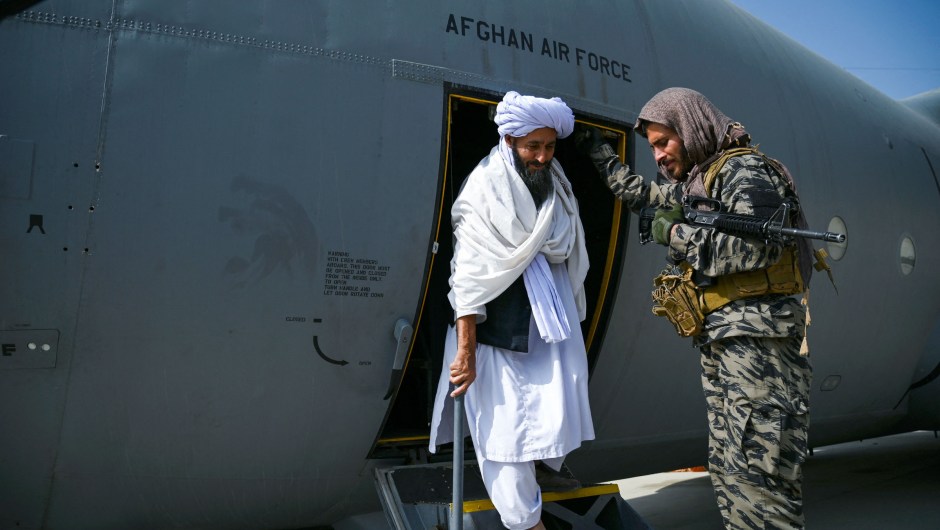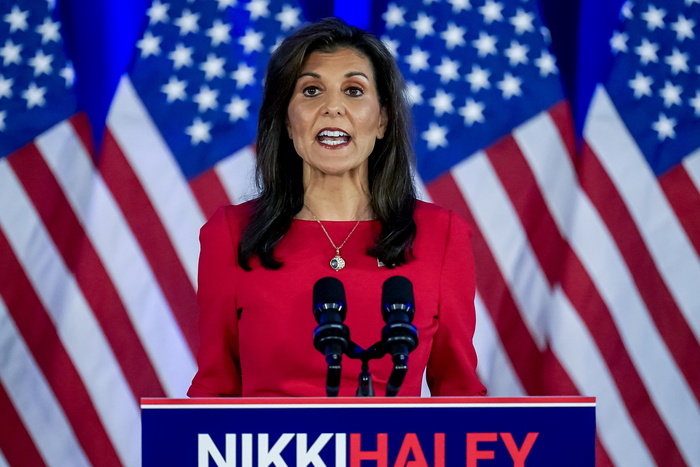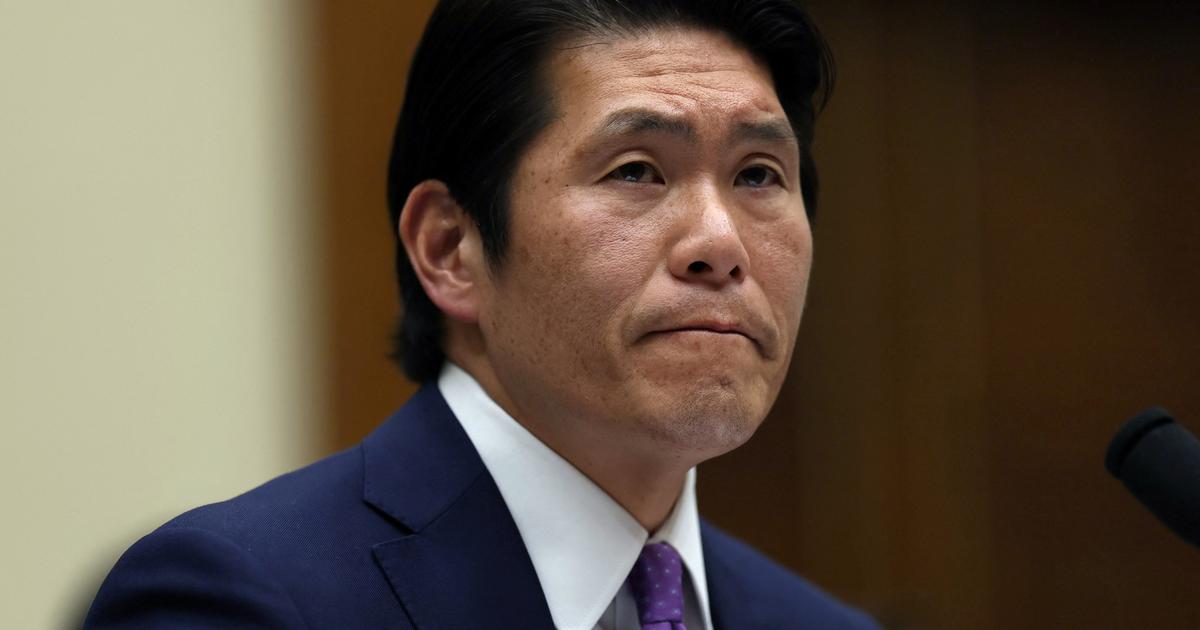After the withdrawal of the US What you should know 2:52
Washington (CNN) --
At the height of the US withdrawal from Afghanistan, there were only 36 State Department officials at Kabul airport to process Afghans trying to evacuate, according to a report by House Republicans. of Representatives to be released soon, despite State Department claims that resources had been increased to handle the crowds desperately trying to flee the country.
This figure, which meant there was "approximately one consular officer for every 3,444 evacuees," is one of several previously undisclosed details outlined in the highly critical report examining the chaotic US withdrawal from Afghanistan in August 2021.
The House Foreign Affairs Committee Republicans' report, released roughly a year after Afghanistan's capital fell to the Taliban, reveals additional new details about the Biden administration's failure to plan and properly execute the US withdrawal from Afghanistan.
The report, a final draft of which was obtained by CNN, also says the administration failed to accurately portray the nature of events on the ground and put in place a plan to prevent American-trained Afghan commandos from being recruited by US adversaries. Joined.
Escape from Kabul: An Afghan Family's Story of Heartbreak and Rescue
It marks one year since the withdrawal of US troops from Afghanistan 4:58
"Many of the Biden administration's evacuation plans were made in the spring of 2021, some even before the president announced the withdrawal of troops from Afghanistan. And (the plans) were never updated despite progress in the Taliban battleground, despite the deteriorating security situation and despite revised intelligence assessments,” said Rep. Michael McCaul, the top Republican on the House Foreign Affairs Committee.
President Joe Biden announced in mid-April 2021 that the United States would withdraw all remaining troops from Afghanistan by September 11 of that year, the 20th anniversary of the terrorist attacks that launched the US war there.
While Biden always wanted to end US involvement in the war in Afghanistan, he attributed the decision, in part, to the deal brokered with the Taliban by the Trump administration, which had a commitment to withdraw by May 1, 2021.
advertising
In the weeks and months that followed, lawmakers from both parties urged the administration to ensure plans were put in place to ensure the protection of Afghans who worked for the United States during the nearly two-decade conflict, including evacuation options.
Both the State Department and the Pentagon have conducted their own reviews of the US withdrawal from Afghanistan, but neither Department has published any conclusions.
The Pentagon review is ongoing, while the State Department concluded its in March, according to a source familiar with the review.
The delay in its publication is due, in part, to an interagency review process fraught with concerns about policy, optics, and the effective implementation of lessons learned.
Afghanistan came this year at the end of an era, but what's next?
Afghanistan: This is what Biden said when announcing US withdrawal. 0:21
Some conclusions of the report on the withdrawal from Afghanistan
The House report found that it was not until mid-June 2021 that the US Embassy in Kabul held an Operational Planning Team (OPT) meeting with members of the US military and diplomats focused on pre-planning of non-combatant evacuation operations (NEO).
The meeting was described by a US military official involved as "the first time" that the embassy began "considering the possibility of a NEO".
Due to the "complete lack of proper planning by the Biden administration" there were consequences: Evacuation flights "were taking off at only about 50% capacity" five days after the NEO, the report says.
The report refers to a slow process, which led to chaos: a government evacuation process so chaotic and messy that even employees of Vice President Kamala Harris and First Lady Jill Biden contacted outside groups to try to get the job done. to the people, representatives of the groups told the commission.
Evacuation flights from Afghanistan mostly carried men
The report found that those who were able to get out on those evacuation flights were mostly men, despite concerns, which have now been confirmed, that women were stripped of their freedoms when the Taliban took power.
"We now know through data from the Departments of State and Homeland Security that only about 25 percent of people evacuated during the NEO in Afghanistan were women or girls. To put this figure in context, historically, women and girls they represent more than half of emergency refugee outflows,” Ambassador Kelley Currie, ambassador at large for the State Department’s Bureau of Global Women’s Affairs under the Trump administration, wrote in the report.
When Kabul fell and then-Afghan President Ashraf Ghani fled the country, two top US officials, General Kenneth "Frank" McKenzie, the then head of US Central Command, and Zalmay Khalilzad, the then special representative for Afghanistan who brokered the US-Taliban deal under Trump, met with Taliban officials in Doha, where the militant group offered the US security control of the capital city.
McKenzie testified that he turned down the offer, telling Congress in September 2021: "That was not the reason I was there, that was not my instruction, and we did not have the resources to carry out that mission."
The most shocking images of the situation in Afghanistan after the advance of the Taliban
1 of 5
|
An Afghan Air Force A-29 attack aircraft is seen inside a hangar at Kabul airport.
Wakil Kohsar/AFP/Getty Images
2 of 5
|
A Taliban member steps out of an Afghan Air Force plane at Kabul airport on Tuesday, August 31.
Wakil Kohsar/AFP/Getty Images
3 of 5
|
Taliban fighters sit in the cockpit of an Afghan Air Force plane at Kabul airport on Tuesday.
Wakil Kohsar/AFP/Getty Images
4 of 5
|
Taliban members are seen inside an Afghan Air Force plane at the airport.
Wakil Kohsar/AFP/Getty Images
5 of 5
|
A Taliban fighter takes a photo of a damaged Afghan Air Force MD 530 helicopter at Kabul airport.
Wakil Kohsar/AFP/Getty Images
However, Khalilzad told the commission that he thought "we might have considered it," the report says.
The former official also said the United States did not order the Taliban to stay out of Kabul.
“We didn't say, 'don't go.'
We advise them to be careful," Khalilzad said, according to the report. Meanwhile, US officials had repeatedly said the United States supported peace talks between the Taliban and the Ghani government.
Those trying to flee the city were forced to contend with the Taliban threat as they tried to reach the airport, where thousands gathered outside the gates in a desperate attempt to get in and catch a flight.
And in the first days of the evacuation, the airport operation was so poorly run that groups of Afghans poured onto the runway and desperately tried to hold off departing planes.
"Since the administration relinquished control of Kabul to the Taliban, it was a very challenging situation tactically. But it was the decisions they made, or in some cases avoided making, that led to that tactically challenging situation," McCaul said.
National Security Council spokeswoman Adrienne Watson said the report "is riddled with inaccurate characterizations, carefully selected information and false claims" and that it "advocates endless war and sending even more US troops to Afghanistan."
As that chaos unfolded, the report argues that the administration "repeatedly misled the American public" by attempting to downplay the grim situation on the ground and instead paint a picture of competence and progress.
The report juxtaposes State Department officials' comments with internal memos, such as one on August 20 that said at least seven Afghans had "died while waiting outside the gates of HKIA (Hamid Karzai International Airport in Kabul). " and that the Taliban "refused to accept the remains" of the corpses that were being stored at the airport.
"At one point, State Department spokesman Ned Price was encouraging people to head to the airport and telling the press that the evacuation was 'efficient and effective,' but the airport gates were locked and internal memos They were talking about how there were too many dead bodies at the airport and they don't know how to deal with all of them," McCaul said.
20 years after 9/11, the threat against the US revives. 4:10
The Biden administration refused to participate in the report on Afghanistan
The House committee requested transcripts of interviews with more than 30 administration officials, but the Biden administration declined to participate.
For the report, the commission relied on interviews and information from whistleblowers, conversations with people who were in Kabul during the pullout, and fact-finding trips to the region.
The State Department rejected the notion that it had failed to comply with congressional oversight efforts.
"We have provided more than 150 briefings to members and staff on Afghanistan since the NEO, covering a wide range of topics, including withdrawal, women and girls, relocation operations, counter-terrorism and talks with the Taliban," a spokesperson said. from the State Department, which added that Secretary of State Antony Blinken had testified at two hearings on Afghanistan.
The Republicans leading this investigation are in the minority, meaning they have no subpoena power, however they have indicated they will issue subpoenas and continue to investigate the recall if their party takes over the House in this year's election.
They're calling this an interim report.
The report also says the administration failed, even months after the pullout, to take steps to prevent US-trained Afghan commandos from being recruited by US adversaries such as Iran, China or Russia.
"The US government evacuated some 600 Afghan security forces personnel who assisted in the evacuation by providing perimeter security and other functions, but they represent a very small fraction of the US-trained units that fought alongside US troops. And even those lucky enough to fly have found themselves stranded in third countries," the report says, adding that 3,000 Afghan security forces fled to Iran according to a SIGAR report from earlier this year.
As of July, the Biden administration did not yet have a plan to prioritize evacuating these Afghans from the region, and the State Department was awaiting a policy decision from the NSC, the report says.
Afghanistan












